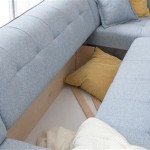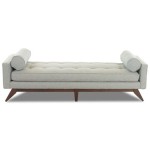Can Cats Scratch Leather Sofas? Understanding the Risks and Solutions
Leather sofas represent a significant investment for many homeowners, offering a luxurious aesthetic and durability. However, the introduction of a feline companion into the household raises a common concern: can cats scratch leather sofas? The answer, unfortunately, is often yes. Cats possess a natural instinct to scratch, and leather, despite its robust nature, can be a tempting and vulnerable target.
Understanding the motivations behind feline scratching behavior is crucial for addressing this issue effectively. Scratching serves multiple purposes for cats, including maintaining claw health, stretching muscles, and marking territory. A cat's claws grow continuously, and scratching helps to shed the outer layer, revealing the sharper claw underneath. This action also exercises the muscles in the paws and legs, contributing to the cat's overall physical well-being. Furthermore, cats have scent glands in their paws, and scratching leaves behind a visual and olfactory marker that communicates their presence to other animals.
The texture of leather, although smooth to the human touch, can provide a satisfying scratching surface for cats. The ability of a cat's claws to sink slightly into the leather initially, followed by a tearing motion, can be particularly appealing. Once a cat has scratched a leather sofa, the damaged area may become even more attractive, due to the loosened fibers offering easier purchase for their claws. The scent marking deposited during the initial scratch can also encourage repeated behavior.
Understanding the Appeal of Leather to Cats
Several factors contribute to why leather sofas become targets for feline scratching. The initial allure can be attributed to the texture, as described earlier. However, a cat's preference for a particular scratching surface is also influenced by its location and accessibility. If a sofa is positioned prominently within the cat's territory, acting as a central point for observation or a frequently used thoroughfare, it is more likely to be scratched. Additionally, the sofa's stability can play a role. A sturdy, well-balanced sofa provides a secure surface for scratching, allowing the cat to exert force without fear of the furniture tipping over.
The type of leather also matters. Some types of leather are more resistant to scratching than others. For instance, top-grain leather, known for its tight grain and durable finish, tends to hold up better against cat claws compared to softer, more pliable leathers like nubuck or suede. Bonded leather, a less expensive option made from leather scraps glued together, is particularly vulnerable to scratching due to its weaker composition.
The age and condition of the leather sofa also influence its susceptibility to scratching. Older leather, which may have become dry and brittle over time, is more prone to tearing and damage. Regular conditioning can help to maintain the leather's elasticity and prevent it from becoming overly susceptible to scratches. Also, the presence of existing scratches or blemishes can further encourage a cat to scratch the same area, as the damaged surface provides an easier starting point for tearing.
Prevention Strategies: Diverting and Discouraging Scratching
Preventing a cat from scratching a leather sofa requires a multifaceted approach that focuses on redirecting its scratching behavior towards more appropriate outlets and discouraging scratching the sofa itself. Providing alternative scratching posts is paramount. These posts should be tall enough to allow the cat to fully stretch its body while scratching, and sturdy enough to withstand the force of its claws. Different types of scratching posts, such as those made from sisal, cardboard, or carpet, should be offered to determine the cat's preferred texture. Variety is key, as cats can have varied preferences, and offering multiple options increases the likelihood of finding one that appeals to the cat's individual scratching style.
Placement of scratching posts is as important as their material. They should be located in areas where the cat spends a significant amount of time, such as near its sleeping area, play area, or pathways it frequently uses. Placing a scratching post near the sofa that the cat is currently scratching can help redirect its attention to a more appropriate surface. Positive reinforcement, such as rewarding the cat with treats or praise when it uses the scratching post, can further encourage its use. The aroma of catnip can also be used to entice the cat to investigate and scratch the post.
Discouraging scratching on the leather sofa can be achieved through various methods, including making the surface less appealing to the cat. Double-sided sticky tape, applied to the areas where the cat typically scratches, can create an unpleasant texture that deters scratching. Aluminum foil or plastic sheeting can also be used as temporary deterrents. Commercial cat repellent sprays, formulated with scents that cats find offensive, can be applied to the sofa, but should be tested on an inconspicuous area first to ensure they do not damage the leather. It is imperative to refrain from using punishment or scolding, as this can create anxiety and damage the bond between the owner and the cat potentially making the cat afraid of interacting with the owner or avoiding the area entirely, instead of redirecting the behavior.
Repairing and Protecting Damaged Leather
Despite preventative measures, scratches on a leather sofa may still occur. The extent of the damage will determine the appropriate repair method. Minor scratches can often be addressed with leather conditioners and moisturizers, which help to soften the leather and reduce the visibility of the scratches. Leather fillers, available in various colors to match the sofa's existing leather, can be used to fill deeper scratches or gouges. The filler is applied to the damaged area, allowed to dry, and then sanded smooth to blend with the surrounding leather.
More extensive damage, such as large tears or significant discoloration, may require professional repair. Leather repair specialists have the expertise and tools to restore damaged leather to its original condition accurately. This may involve patching the damaged area with new leather, re-dyeing the leather to match the original color, or even replacing entire sections of the sofa's upholstery. Professional repair can be costly, but it can significantly extend the life of the sofa and restore its aesthetic appeal.
Protective covers can provide an additional layer of defense against cat scratches. These covers can be custom-made to fit the sofa, or purchased as pre-made slipcovers. The choice of material is important; tightly woven fabrics are less likely to be snagged by cat claws compared to loosely woven fabrics. Regularly cleaning the protective covers can also help to remove any cat hair or dander that may accumulate and attract further scratching. Some covers are treated with stain-resistant and water-repellent finishes, adding further protection against spills and other damage.
Regular trimming of the cat's claws can also help to minimize the damage caused by scratching. Trimming the sharp tips of the claws reduces their ability to penetrate and tear the leather. However, it is crucial to trim only the tips of the claws, avoiding the quick (the pink part of the claw containing blood vessels and nerves) to prevent pain and bleeding. If unfamiliar with trimming a cat's claws, it is advisable to seek guidance from a veterinarian or professional groomer.
In conclusion, although leather sofas are vulnerable to scratching by cats, understanding the reasons behind this behavior and implementing preventative measures can significantly reduce the risk of damage. A combination of providing suitable scratching alternatives, discouraging scratching on the sofa, and addressing any existing damage promptly is necessary for maintaining both a harmonious household and a beautiful leather sofa.

How To Fix Cat Scratch On Leather Couch Cozy Living

How To Repair Cat Scratched Leather The Interior Diyer

How To Repair Cat Scratches On Leather The Colour Doctor

How To Repair Cat Other Scratches On Leather Material Von Baer

Do Cats Scratch Leather Reasons Prevention Tips Hepper Pet Resources

Repair Dog Cat Scratches On Leather

How To Deter Cats From Scratching Leather Furniture Best

Cat Scratches On Leather Www Dictionary Com The

Repair Dog Cat Scratches On Leather

Leather Damage Repair By The Pro S Leatherguru 01923 271447








